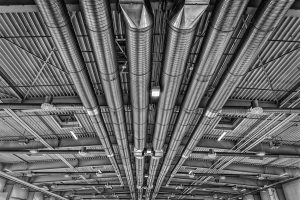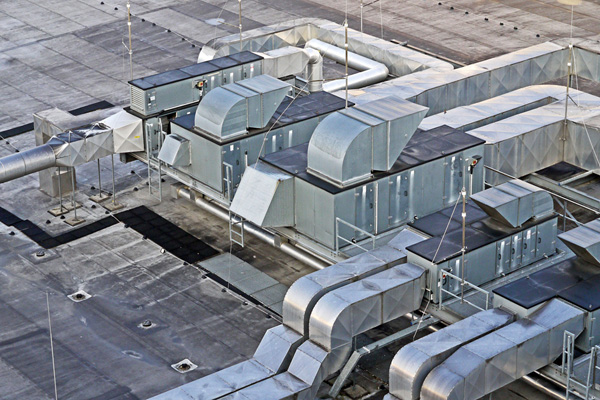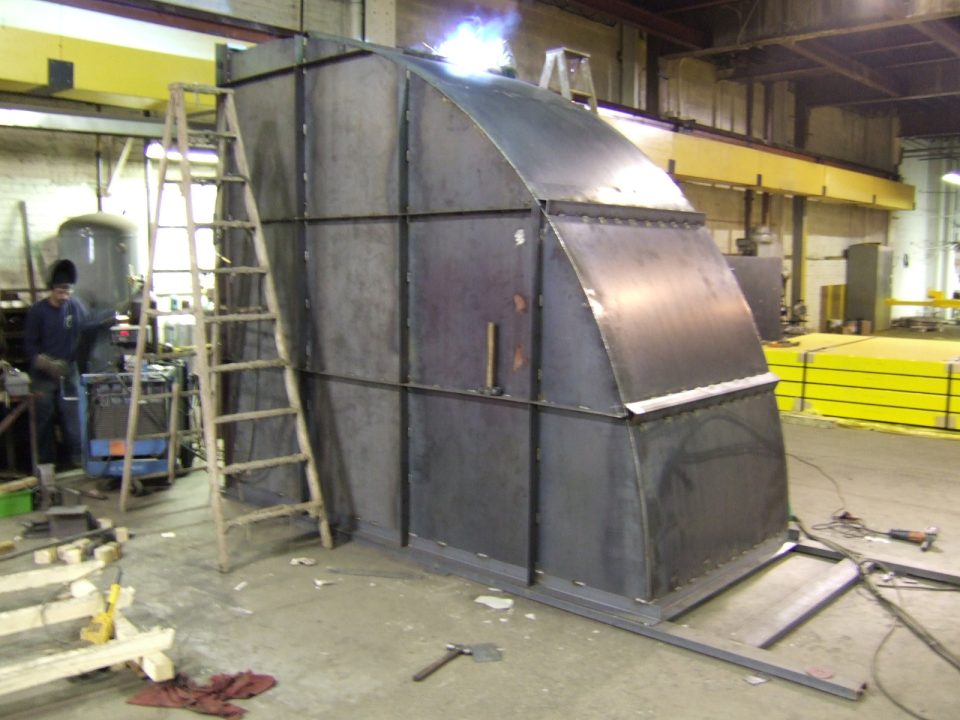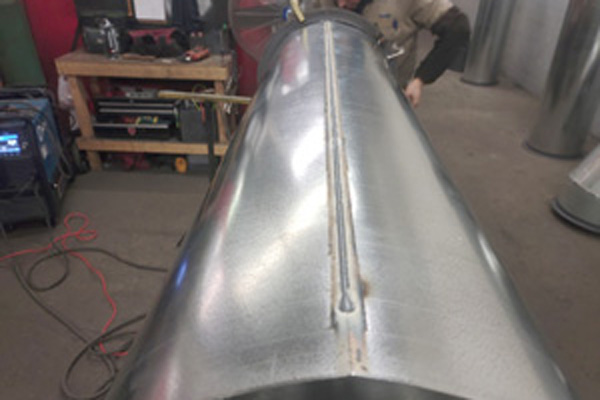Dual Concerns Drive Air Duct Market
Dual Concerns Drive Air Duct Market
Energy Savings and Circulation Improvements
The HVAC duct market is projected to grow at a Compound Annual Growth Rate (CAGR) of 4.4% for years, reaching a value of 11.61 billion by 2027. According to Fortune Business Insights, two factors lead the way in this promising market.
One driver is energy. Today, building owners are more sensitive to life-time costs in heating and cooling. Smart HVAC systems and energy-wise building designs are sought after so that energy is used where and when needed, and only as long as needed.
Today, sensor systems are capable of monitoring when floors and rooms are in use, then automatically adjusting air flow and heating to meet real-time needs. Smart systems like these provide for significant savings over time.
 The second driver is air circulation as it relates to building health. The worldwide COVID-19 pandemic has spurred a great deal of research and redesign into how air must be circulated, mixed with fresh air, and purified by UV and ionization technologies to keep building inhabitants safe from microbes. Advancing filter technology also plays a part.
The second driver is air circulation as it relates to building health. The worldwide COVID-19 pandemic has spurred a great deal of research and redesign into how air must be circulated, mixed with fresh air, and purified by UV and ionization technologies to keep building inhabitants safe from microbes. Advancing filter technology also plays a part.
Moving viral particles away from occupants and keeping those occupants healthy is going to be a major concern of HVAC systems for years to come. It’s simple. Unless they feel safe to be in them, people will avoid commercial and public spaces. This would be a disastrous situation for the construction industry in general, but luckily, advancing HVAC technology and cutting-edge duct fabrication can lead the way.
Retrofitting Commercial HVAC Ductwork
When it comes to factors like energy savings and improved circulation, new construction is only a part of the equation. The same concerns apply to aging HVAC systems in commercial buildings everywhere.
Older systems may continue to work, but their efficiency is lagging compared to today’s standards. In general, they are likely to use far more energy than new components doing the same job.
This applies to both the HVAC systems and the ductwork that delivers conditioned air. Aging duct is likely to share at least some of these problems:
- Leaks develop over time as fittings wear and components break down.
- Dust and allergens build up and provide havens for additional microbes.
- Without smart technology, heating and cooling energy is wasted on unused spaces.
- Older designs tend to deliver viruses more effectively than to dissipate and remove them.
The same pressures now taken into account in new construction are drivers for owners of existing buildings too. It’s time to retrofit older HVAC systems in ways that save money long term and keep building occupants both comfortable and less likely to be exposed to viral and microbe concentrations.
This kind of retrofitting pressure in dealing with microbial hazards has happened before. The legionella outbreak in the mid-1970s led to new building and engineering standards that affected the work of architects, building service engineers, and construction professionals— all centered around mitigating water system risks in that case.
Today, testing for and mitigating legionella bacteria in water systems is simply a standard part of building operations. It is likely that today’s anti-viral and filtration adjustments due to the COVID-19 pandemic will end up developing a set of parallel standards for dealing with contagious viruses in buildings, both old and new.
Helping Duct Fabricators Win This New Market
How can The Cincinnatus Group help your business compete in a growing market driven by new concerns over energy savings and improved circulation? Our core focus is on systematic ductwork materials management. We offer advanced partnering services that help you win jobs and deliver high quality results that put you steps ahead of your competitors.
Contracted Duct Take Off Services
At The Cincinnatus Group, we provide our clients with a proprietary ductwork take off system that your fabrication shop can white label as its own. This enables you to benefit from the cost savings and reliable take off methods that we’ve pioneered and proven in practice through decades of industry experience.
By partnering with The Cincinnatus Group, you win the following advantages:
- Reduction in plan & spec take off liability.
- Time-Tested take off workflows & systems.
- Opportunities to repurpose your in-house human capital.
We can help you improve your fabrication shop’s efficiency, reputation, and bottom line by delivering the highest quality take off services under your own brand.
CAD & BIM Services
Today, construction projects, project managers, and architects want more than metal. They’re looking for installation models so precise, they minimize field alterations (saving enormously on labor). They want a visual, easily accessible means for architects, engineers, and owners to work together in resolving conflicts through coordination meetings.
These needs are answered by offering experienced Computer Aided Design (CAD) and Building Information Management (BIM) systems.
From basic shop drawings to complex 3D BIM models with coordination and clash resolution, the best results are available for you from The Cincinnatus Group.
Advanced Partnering Services
As your partner in success, The Cincinnatus Group helps your organization stand out in its marketplace, win more bids, save substantial costs through optimized processes, and build the knowledge and skills your own team needs to continually meet new challenges effectively and profitably.
To learn how we can help your company take the next step, give us a call today at 878.295.8009 or visit our Contact Us page.
Why Choose The Cincinnatus Group?
Our strong work ethic, accountability, and pursuit of excellence set us apart from other HVAC ductwork designers, and our unique expertise and proprietary ductwork estimating systems make us unique among our competitors.
At The Cincinnatus Group, we like to say that we are “called to solve, where others struggle.” Our fabrication partners gain access to our unique experience and expertise, proprietary ductwork material systems, and our construction technology integration experts.
Our assets help you navigate the ever-changing markets of the 21st century. To learn more, call The Cincinnatus Group at 878-295-8009, or visit our Contact Us page today.






